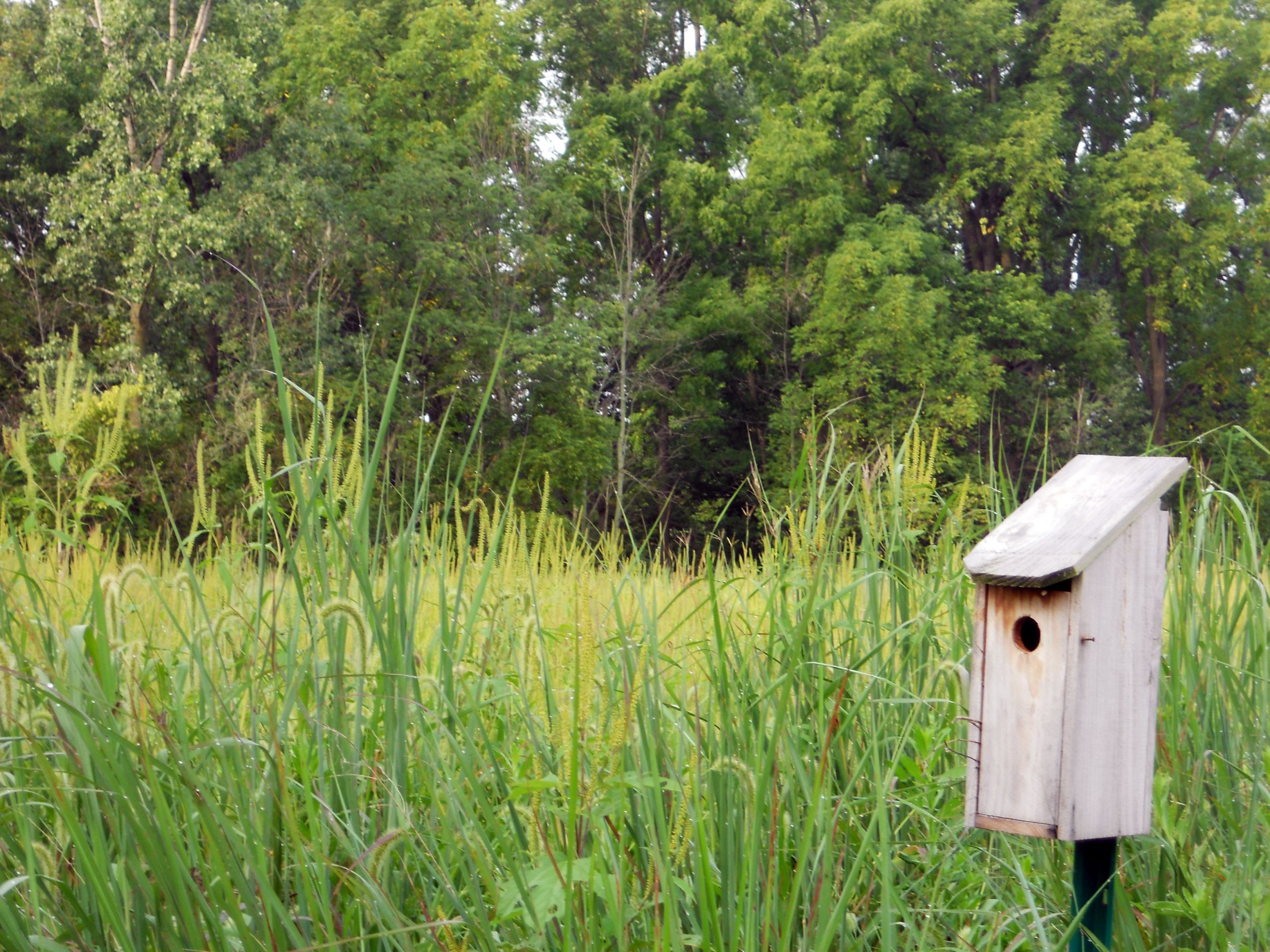Public input suggests that the vast majority of people in Hancock County value undeveloped conservation areas that provide habitat for Songbirds, Butterflies, and other wildlife while beautifying the area. The Hancock Park District manages five conservation areas with no support facilities, such as developed parking lots, trails, and restrooms that were created to protect water quality, expand wildlife habitat, and provide natural beauty.
Bright Conservation Area
10184 Township Road 244, Findlay
Bright Conservation Area is a 29.4-acre undeveloped natural area with no support facilities. It was created to protect water quality, expand wildlife habitat, and provide natural beauty.
Habitat is characterized as native wetland communities, including scrub-shrub, wet meadow, emergent herbaceous, and open water that support a variety of wildlife. Chorus frogs, spring peepers, and mole salamanders use wetlands for breeding. Turtles bask in the sun. American Mink, Great Blue Herons, Baltimore Orioles, Sora, and Common Yellowthroats are on the property. In the spring and fall, several species of waterfowl, such as the Blue and Green-winged Teal, Gadwalls, and American Wigeons, use the wetlands as a migratory stopover.
This quiet walkway may be used for passive outdoor recreation activities, such as hiking, photography, and birdwatching. Stay on the trail and keep dogs on a short leash. Open sunrise to sunset. Horses, bicycles, motorized vehicles, and hunting and trapping are prohibited.
Lehman Conservation Area
West of Riverbend Recreation Area at 16428 Township Road 208, Findlay
Lehman Conservation Area is a 7.1-acre undeveloped natural area with no support facilities. It was created to protect water quality, expand wildlife habitat, and provide natural beauty. Habitat is characterized as early successional riparian woods and serves as a valuable feeding and staging area for migratory birds. Red-tailed hawk, kingsfisher, phoebe, pewee, catbird, cardinal, Carolina wren, yellow-billed cuckoo, northern flicker, song sparrow, field sparrow, indigo bunting, red-headed woodpecker, and spotted sandpipers breed on the property.
A quiet walkway may be used for passive outdoor recreation activities, such as hiking, photography, and birdwatching. Open sunrise to sunset. Dogs, horses, bicycles, motorized vehicles, and hunting and trapping are prohibited.
Indian Green–Worden Family Conservation Area
East of Litzenberg Memorial Woods (south unit), Findlay
Indian Green-Worden Family Conservation Area is a 27.3-acre undeveloped natural area with no support facilities. It was created to preserve the natural area along the Blanchard River, expand wildlife habitat, and provide access to the Heritage Trail via Litzenberg Memorial Woods’ south unit. Habitat is characterized as mature riparian woods that support mink, raccoon, opossum, deer, red fox, gray fox, and coyote, and serve as a valuable feeding and staging area for migratory birds. Red-shouldered hawks, barred owls, and pileated woodpeckers can be found on the property.
The Heritage Trail may be used for passive outdoor recreation activities, such as hiking, photography, and birdwatching. Stay on the trail and keep dogs on a leash. Open sunrise to sunset. Horses, bicycles, motorized vehicles, and hunting and trapping are prohibited.
Lawrence Conservation Area
South of Township Road 236, Findlay
Lawrence Conservation Area is a 16.1-acre undeveloped natural area with no support facilities. It was created to protect water quality, expand wildlife habitat, and provide natural beauty. Habitat is characterized as riparian woods that support mink, raccoon, opossum, deer, red fox, coyote, and several species of squirrel, and serve as a valuable feeding and staging area for migratory birds.
The Blanchard River has several mussel beds in the area that support, among other species, the federally endangered rayed bean. Visitation is by appointment only.
Vogelsong Conservation Area
West of State Route 568 Bridge, Findlay
Vogelsong Conservation Area is a 23.6-acre undeveloped natural area with no support facilities. It was created to protect water quality, expand wildlife habitat, and provide natural beauty. Habitat is characterized as bottomland woods that support mink, raccoon, opossum, deer, gray fox, and several species of squirrel.
Red-tailed hawks breed on the property and osprey have been spotted nearby. Vogelsong Conservation Area is a valuable feeding and staging area for migratory birds.

